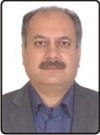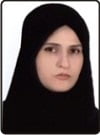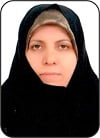Comparative Perspectives on Educational Assessment System at Primary Schools in Japan and Iran
Abstract
ABSTRACT: The comparison of different dimensions of successful and unsuccessful educational system is a popular trend among educational researchers in developing countries. The educational success of Japanese students in international examinations has triggered many researchers all around the world to pay attention to the role of educational system of this country. In the meanwhile, Asian countries have a feeling of closeness to Japan and think they can follow the footsteps of Japan as an ideal model. In Iran and over the last two decades, the Japanese model of education has drawn the attention of researchers involved in education. This interest toward Japan stems from these facts: (1) Japan is an Eastern country and abides by its cultural and traditional system; and (2) Japan’s educational advancement. In addition, Iranian researchers pay particular attention to Japan’s primary school period as the most fundamental stage because international surveys, such as TiMSS (Trend in Mathematics and Science Study) reveals that Iranian primary school pupils do poorly on the math and science exams. One of the reasons of such poor results is the weakness of educational assessment system of Iran. The present article attempts to look at the evaluation system in both countries from a comparative perspective. In the first part, the reasons for the comparison are clarified. In the second part, an overview of the two countries educational system is presented. Part three elucidates common evaluation methods in two countries. In the end, we conclude with a comparative outlook to some of the similarities and differences between Japan and Iran.
KEY WORDS: The comparison, educational system, Japan and Iran, model of education, similarities and differences, and the math and science exams.



About the Authors: Dr. Abbas Madandar Arani is a Lecturer at the Department of Education, Lorestan University, Khorramabad City, Iran; Dr. Lida Kakia is Chairwoman of Social Studies Group, the Education Organization of Tehran (District 6), Tehran City, Iran; and Zahra Babaei is Head of Ayob Hosayni Middle Secondary School, the Education Organization of Tehran (District 5), Tehran City, Iran. For academic interests, the authors can be contacted via their e-mails at: rie2000@gmail.com, lida.kakia@gmail.com, and babaei.zahra@ymail.com
How to cite this article? Arani, Abbas Madandar, Lida Kakia & Zahra Babaei. (2015). “Comparative Perspectives on Educational Assessment System at Primary Schools in Japan and Iran” in EDUCARE: International Journal for Educational Studies, Vol.7(2) February, pp.93-102. Bandung, Indonesia: Minda Masagi Press and UMP Purwokerto, ISSN 1979-7877.
Chronicle of the article: Accepted (September 29, 2014); Revised (November 14, 2014); and Published (February 28, 2015).
Keywords
Full Text:
PDFReferences
Ahghar, G. (2004). “The Content Appropriateness of the Fifth Grade's Experimental Science Textbook for the Cognitive Ability of Tehrani Students” in Quarterly Journal of Education, 20(4), pp.7-38.
Ahmadi, G. (2003). The Assessment of Curricula of Teacher Training Centers in Iran. Tehran: Research Center for Curriculum Development and Educational Innovations, Ministry of Education.
Arani, A. Madandar & P. Abbasi. (2008). “The Education System of Iran” in H.J. Steyn & C.C.Wolhuter [eds]. Education Systems: Challenges of the 21st Century. Orkney, South Africa: Keurkopie Uitgewers.
Aso, M. & I. Amano. (1972). Education and Japan's Modernization. Tokyo: Ministry of Foreign Affairs.
Bray, Mark. (2004). “Methodology and Focus in Comparative Education” in Mark Bray & Ramsey Koo [eds]. Education and Society in Hong Kong and Macao: Comparative Perspectives on Continuity and Change. Hong Kong: CERC [Comparative Education Research Centre] Studies in Comparative Education 7, The University of Hong Kong, 2PndP edition, pp.237-350.
Crossley, M. & K. Watson. (2003). Comparative and International Research in Education: Globalisation, Context, and Difference. London: Routledge Falmer.
Dadsetan, P. & Z. Daneshpajuh. (1995). Pupils Stress at Exams and Ways of Reducing it. Tehran: Educational Research Council of Tehran Province.
Davies, L. (2004). “Comparative Education in an Increasingly Globalised World” in Comparative Education Bulletin: Comparative Education Society of Hong Kong, No.7, pp.1-26.
Elhampur, H. (1996). “The Assessment of Exams by-Law from the Viewpoint of Khuzestan Province Primary Teachers”. Paper presented in the National Conference for Improving General Education, Educational Organization of Tehran City.
Farshad, M. (2003). A Review of Studies on Curriculum of Sciences at Primary Schools. Tehran: Research Center for Curriculum Development and Educational Innovations, Ministry of Education.
Hasani, M. (2005). “The Handbook of Implementing Descriptive Assessment for 1st, 2nd, and 3rd Graders”. Available [online] also at: http://baher.blogfa.com/post-12.aspx [accessed in Khorramabad City, Iran: October 24, 2014].
Khalkhali, M. (1995). A Critique of Testing and Evaluation System on Pupils’ Learning in Iran. Tehran: Educational Research Center, Press Unit.
Khoshkholgh, E. & H.P. Sharifi. (2007). “Evaluation of the National Experimental Project on Descriptive Evaluations at Some of the Country's Elementary Schools” in Quarterly Journal of Education, 22(4), pp.117-148.
Kubow, P.K. & P.R. Fossum. (2003). Comparative Education: Exploring Issues in International Context. New Jersey: Merrill Prentice Hall.
Kydyralieva, S. (2010). “The Education System of Japan as a Model to Education System of Kyrgyzstan” in Journal of Turkish Weekly. Available [online] also at: www.turkishweekly.net/prints.asp?type=2&id=266 [accessed in Khorramabad City, Iran: October 24, 2014].
Lewis, C.C. & I. Tsuchida. (1997). “Planned Educational Change in Japan: The Shift to Student–Centered Elementary Science” in Journal of Educational Policy, 12(5), pp.313-331.
Lincicome, M.E. (1995). Principle, Praxis, and the Politics of Educational Reform in Meiji Japan. Honolulu: University of Hawaii Press.
Martin, M.O. et al. (2004). TIMSS 2003: International Science Report. Boston, USA: IEA, Boston College.
MoE [Ministry of Education]. (2004). Education in the Islamic Republic of Iran: A General Overview. Tehran: Center for Educational Research, Ministry of Education.
Moghanizade, M.H. (2001). “The Assessment of Qualitative Pre-Piloting at Primary Schools in the Academic Year of 2002-2003”. Available [online] also at: http://arzeshyabytosify.blogspot.com [accessed in Khorramabad City, Iran: October 24, 2014].
Moshavi, S. (1996). A Survey on Assessment System of Primary Cycle. Tehran: Institute of Research and Educational Planning, Ministry of Education.
O’Donnell, S. (2004). International Review of Curriculum and Assessment Frameworks, Qualifications and Curriculum Authority, and National Foundation for Educational Research, Washington, DC: n.p.
Pashasharifi, H. & A. Kiamenesh. (1990). Assessment Methods of Pupils’ learning, Tehran: Office for Planning and Compiling Text-Books, Ministry of Education.
Passin, H. (1965). Society and Education in Japan. Tokyo: Kodansha International Ltd.
Reynolds, D. & S. Farrell. (1996). Worlds Apart? A Review of International Surveys of Educational Achievement Involving England. London: Her Majesty’s Stationery Office.
Sadigh, E. (1974) History of Culture in Iran. Tehran: University of Tehran Press.
Sadler, M. (1964). “How Far Can We Learn Anything of Practical Value from the Study Foreign Systems of Education?” reprinted in Comparative Education Review, 7(3), pp.307-314.
Sarkar Arani, M.R. (2001). Culture of Education in Japan. Tehran: Roozegar Publications.
EDUCARE: International Journal for Educational Studies. Ciptaan disebarluaskan di bawah Lisensi Creative Commons Atribusi-BerbagiSerupa 4.0 Internasional
